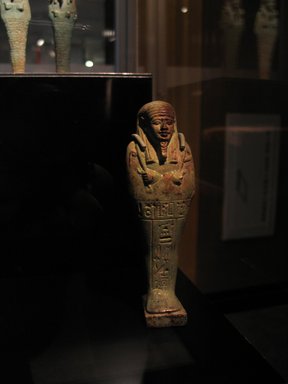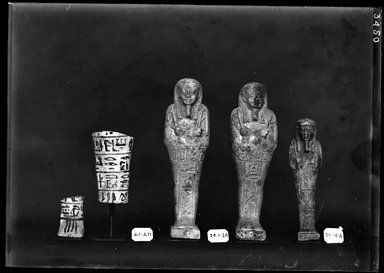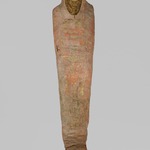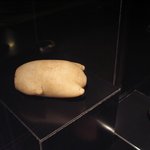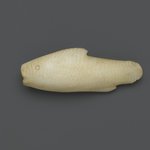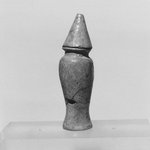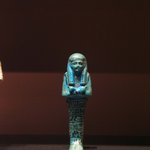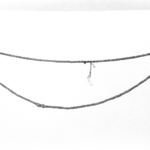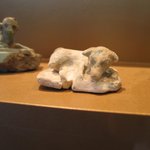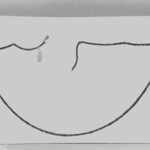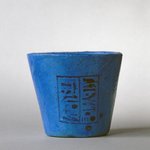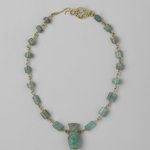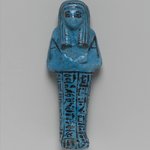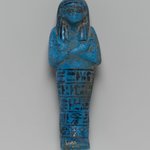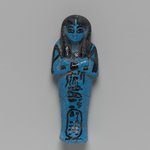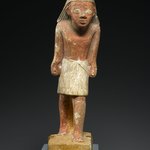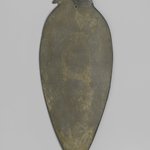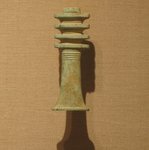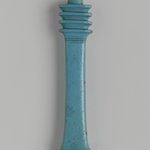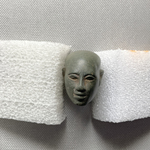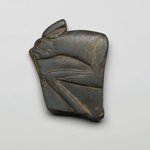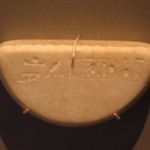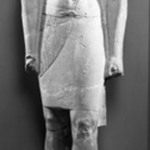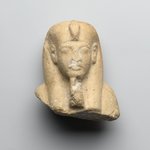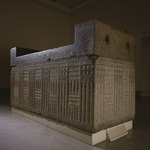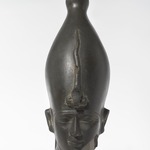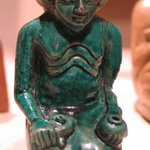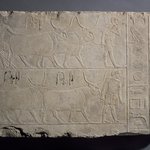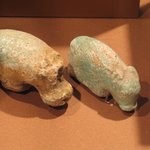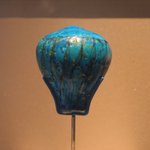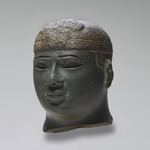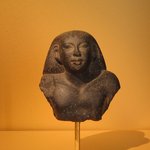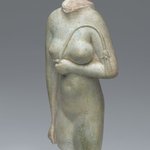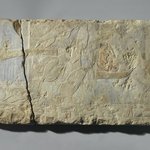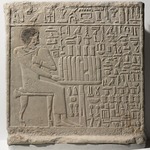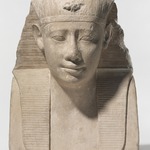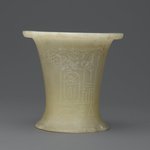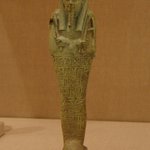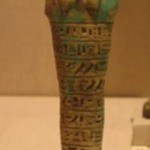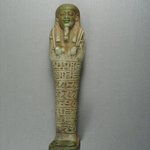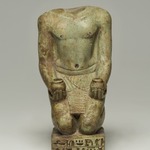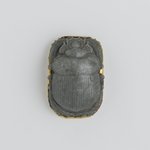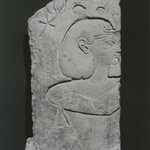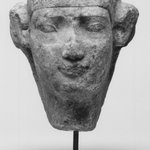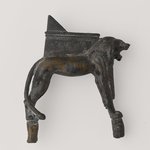

Shabty of the Priest Nes-iswt, 664–525 B.C.E. Faience, 5 3/4 x 1 3/4 x 1 1/4 in. (14.6 x 4.4 x 3.2 cm). Brooklyn Museum, Charles Edwin Wilbour Fund, 37.217E. Creative Commons-BY (Photo: Brooklyn Museum, 37.217E_front_PS2.jpg)
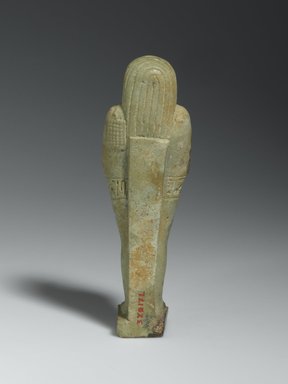
Shabty of the Priest Nes-iswt, 664–525 B.C.E. Faience, 5 3/4 x 1 3/4 x 1 1/4 in. (14.6 x 4.4 x 3.2 cm). Brooklyn Museum, Charles Edwin Wilbour Fund, 37.217E. Creative Commons-BY (Photo: Brooklyn Museum, 37.217E_back_PS2.jpg)
Shabty of the Priest Nes-iswt
Egyptian, Classical, Ancient Near Eastern Art
Shabties were included in tombs to perform agricultural work in place of the deceased in the afterlife. Many of them are inscribed with Chapter 6 of The Book of the Dead, which says they will dig irrigation ditches, cultivate crops, and carry sand. Others only bear the name and title of the owner. The earlier examples included here are inscribed in ink while in the later examples the text is part of the mold, which clearly saved labor. Shabties and scarabs, beetle-shaped amulets associated with rebirth and the sun god, are the most common Egyptian antiquities to survive to modern times.
MEDIUM
Faience
DATES
664–525 B.C.E.
DYNASTY
Dynasty 26
PERIOD
Late Period
DIMENSIONS
5 3/4 x 1 3/4 x 1 1/4 in. (14.6 x 4.4 x 3.2 cm) (show scale)



COLLECTIONS
Egyptian, Classical, Ancient Near Eastern Art
ACCESSION NUMBER
37.217E
CREDIT LINE
Charles Edwin Wilbour Fund
CATALOGUE DESCRIPTION
Faience Ushabti of the Was-Priest of the Temples of Memphis, Nesi-Kedwet, born of Tase-en-onkh. In mummiform, holding implements.
MUSEUM LOCATION
This item is not on view
CAPTION
Shabty of the Priest Nes-iswt, 664–525 B.C.E. Faience, 5 3/4 x 1 3/4 x 1 1/4 in. (14.6 x 4.4 x 3.2 cm). Brooklyn Museum, Charles Edwin Wilbour Fund, 37.217E. Creative Commons-BY (Photo: Brooklyn Museum, 37.217E_front_PS2.jpg)
IMAGE
front, 37.217E_front_PS2.jpg. Brooklyn Museum photograph, 2006
"CUR" at the beginning of an image file name means that the image was created by a curatorial staff member. These study images may be digital point-and-shoot photographs, when we don\'t yet have high-quality studio photography, or they may be scans of older negatives, slides, or photographic prints, providing historical documentation of the object.
RIGHTS STATEMENT
Creative Commons-BY
You may download and use Brooklyn Museum images of this three-dimensional work in accordance with a Creative Commons license. Fair use, as understood under the United States Copyright Act, may also apply.
Please include caption information from this page and credit the Brooklyn Museum. If you need a high resolution file, please fill out our online application form (charges apply).
For further information about copyright, we recommend resources at the United States Library of Congress, Cornell University, Copyright and Cultural Institutions: Guidelines for U.S. Libraries, Archives, and Museums, and Copyright Watch.
For more information about the Museum's rights project, including how rights types are assigned, please see our blog posts on copyright.
If you have any information regarding this work and rights to it, please contact copyright@brooklynmuseum.org.
RECORD COMPLETENESS
Not every record you will find here is complete. More information is available for some works than for others, and some entries have been updated more recently. Records are frequently reviewed and revised, and we welcome any additional information you might have.
